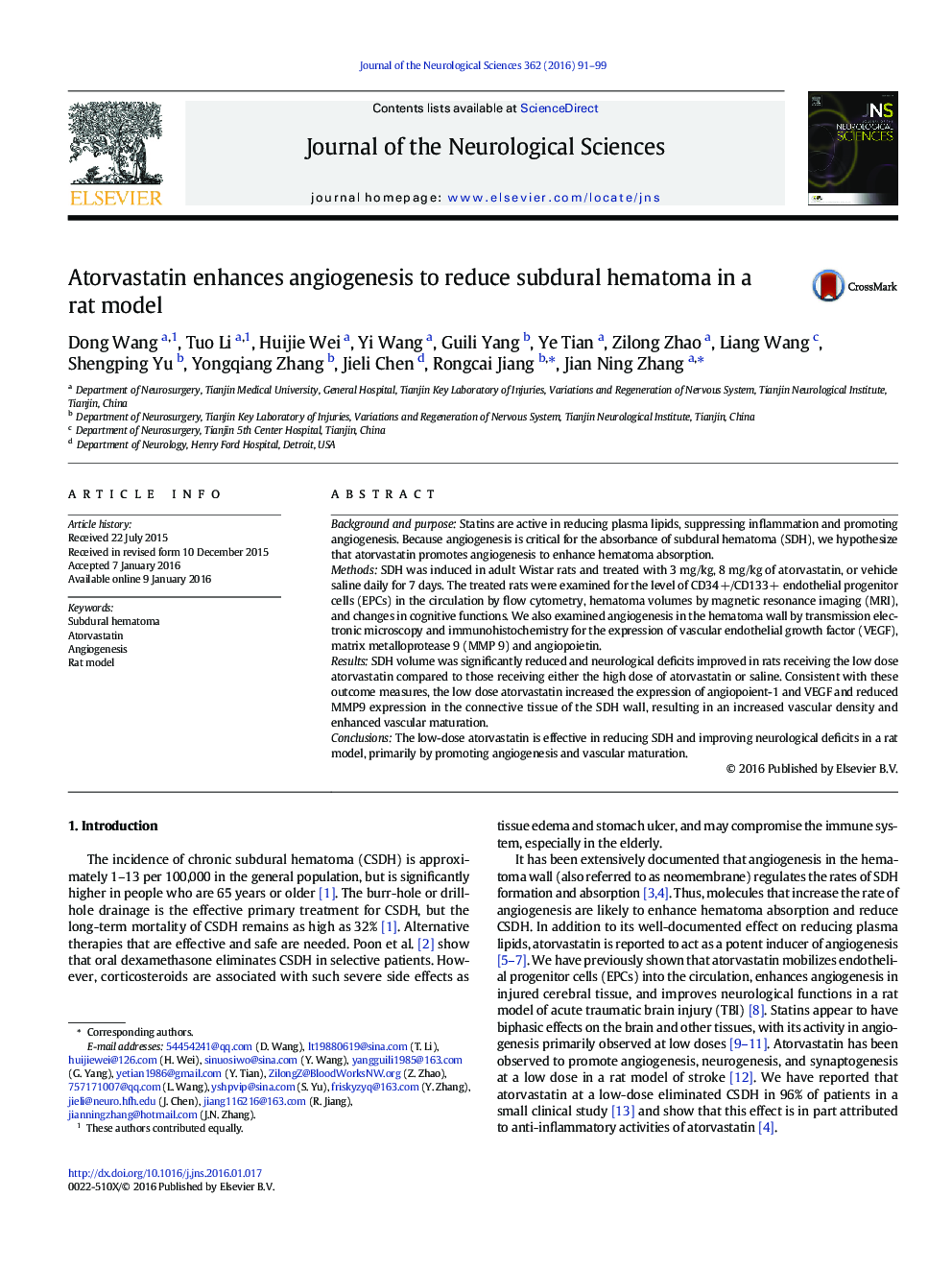| Article ID | Journal | Published Year | Pages | File Type |
|---|---|---|---|---|
| 1913045 | Journal of the Neurological Sciences | 2016 | 9 Pages |
•Atorvastatin promotes blood absorption in a rat model of subdural hematoma.•The effect is mediated by atorvastatin-induced angiogenesis in the hematoma wall.•Atorvastatin at low doses promotes vascular maturation by regulating vascular factors.
Background and purposeStatins are active in reducing plasma lipids, suppressing inflammation and promoting angiogenesis. Because angiogenesis is critical for the absorbance of subdural hematoma (SDH), we hypothesize that atorvastatin promotes angiogenesis to enhance hematoma absorption.MethodsSDH was induced in adult Wistar rats and treated with 3 mg/kg, 8 mg/kg of atorvastatin, or vehicle saline daily for 7 days. The treated rats were examined for the level of CD34 +/CD133 + endothelial progenitor cells (EPCs) in the circulation by flow cytometry, hematoma volumes by magnetic resonance imaging (MRI), and changes in cognitive functions. We also examined angiogenesis in the hematoma wall by transmission electronic microscopy and immunohistochemistry for the expression of vascular endothelial growth factor (VEGF), matrix metalloprotease 9 (MMP 9) and angiopoietin.ResultsSDH volume was significantly reduced and neurological deficits improved in rats receiving the low dose atorvastatin compared to those receiving either the high dose of atorvastatin or saline. Consistent with these outcome measures, the low dose atorvastatin increased the expression of angiopoient-1 and VEGF and reduced MMP9 expression in the connective tissue of the SDH wall, resulting in an increased vascular density and enhanced vascular maturation.ConclusionsThe low-dose atorvastatin is effective in reducing SDH and improving neurological deficits in a rat model, primarily by promoting angiogenesis and vascular maturation.
